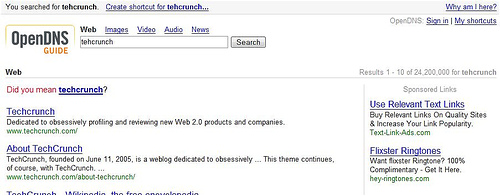Big brouhaha this morning over the fact that Google’s Toolbar “hijacks” 404 error pages and displays their own promo instead. “Google is evil” – say some webmasters.
I don’t see it a big deal. 404 pages are not exactly masterfully designed pages anyway, in fact I’m not really supposed to see them at all.
By the way, it’s not such a new idea either: it’s the very foundation of OpenDNS‘s business model.
Update: Google’s Matt Cutts explains how 404 works.




 Please fill out the form below.
Please fill out the form below. (Disclaimer: I am an Advisor to Zoho – but I am making a point by doing this.)
(Disclaimer: I am an Advisor to Zoho – but I am making a point by doing this.) 
 For all my love and support of SVASE, I sometimes complain that the monthly “Main Events” are a bit cut-and-dry. Well, that will certainly not be the case tomorrow: star-power, money, frugality are all well represented on the panel discussing
For all my love and support of SVASE, I sometimes complain that the monthly “Main Events” are a bit cut-and-dry. Well, that will certainly not be the case tomorrow: star-power, money, frugality are all well represented on the panel discussing  Matt Mullenweg
Matt Mullenweg This is a speculative post. As it is widely known,
This is a speculative post. As it is widely known,  There’s hardly anything new to add to the
There’s hardly anything new to add to the  :
: 


 The 2008 edition of the (in)famous
The 2008 edition of the (in)famous 
Recent Comments